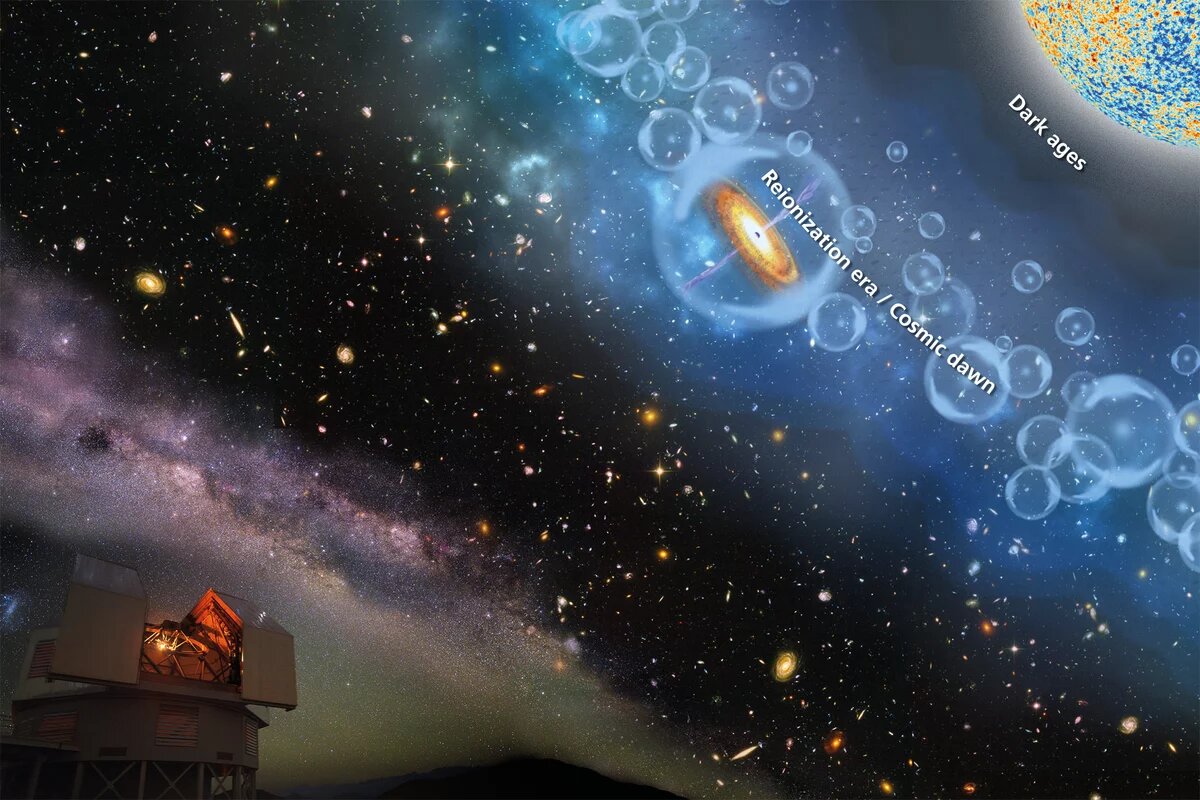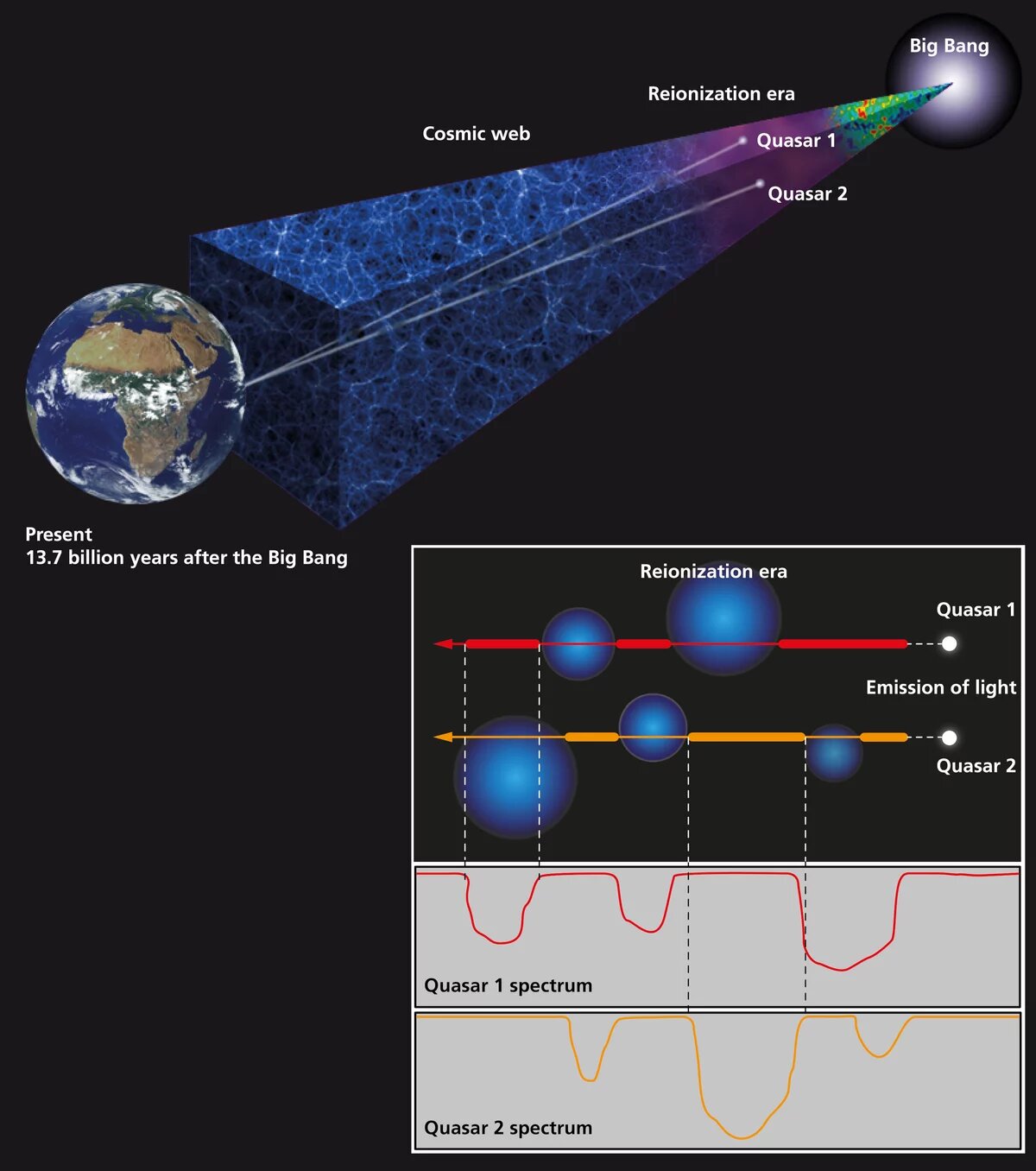When the first stars lit up in space, their radiation ionized the interstellar gas. According to new research, this happened 200 million years later than previously thought. Quasars helped to find out.

Scientists determined when the era of Reionization ended
Scientists from the Max Planck Astronomical Institute in Heidelberg could find out when one of the most mysterious periods in the history of the Universe — the epoch of Reionization — ended. Throughout it, the familiar world has acquired modern features.
It began about 500 million years after the Big Bang. By that time, the original radiation had already gone out, and the Universe was drowning in darkness. However, the first stars, which, according to some assumptions, could flare up due to dark matter, dispersed the darkness and ionized the gas, driving it beyond the boundaries of future galaxies.
A new study has shown that this process ended about 1.1 billion years after the Big Bang and lasted 200 million years longer than previously thought. Given that the first stars lived only a few tens of millions of years, this means that several generations of them had to change during this time. And each of them enriched the Universe with heavy elements.
Quasars outlined the history of the Universe
Quasars helped to see the picture of the Universe about a billion years after its formation. These supermassive black holes absorb the matter of galaxies and shine to us across the Universe. The researchers analyzed the light of 67 similar objects.

While this radiation was flying towards us, two parallel processes were taking place with it. Firstly, the spectrum shifted to the red side, as it happens with all remote objects. Secondly, on the way to us, it passed through the clouds twice, which left their “trace” in it — absorption lines. And for these two types of hydrogens, they are different.
When a ray of light passed through different clouds, the red shift pushed the absorption lines to different distances in the spectrum. Thanks to this, it is possible to decipher through which hydrogen clouds the radiation from quasars passed. It was this task that scientists managed to implement, but it was not easy.
The fact is that not all hydrogen was ionized by the light of the first stars. Large bridges of neutral hydrogen remained between the galaxies. But scientists managed to take this factor into account in their models, and it turned out that the reionization was completed later.
According to phys.org
Follow us on Twitter to get the most interesting space news in time
https://twitter.com/ust_magazine
